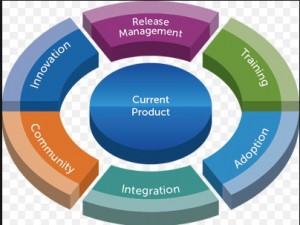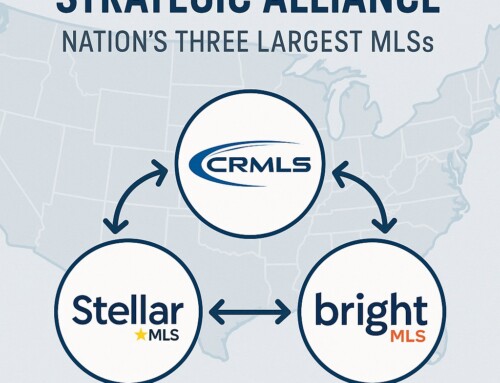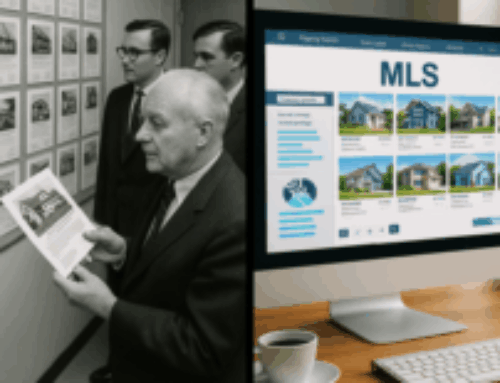 MLSs are growing again. Membership is up. Agents are making money again. Life is good. In many cases, the upward turn in the market is allowing MLSs to once again focus on evaluating their technologies to ensure they are offering the strongest tools they can.
MLSs are growing again. Membership is up. Agents are making money again. Life is good. In many cases, the upward turn in the market is allowing MLSs to once again focus on evaluating their technologies to ensure they are offering the strongest tools they can.
Recently we have been involved in a few system selections and I thought I would share some of our thinking about the best way to make the process as successful as it can be.
Turn on all of the relevant enhancements
Before you even contemplate looking at alternative MLS systems, meet with your current MLS provider. Review all of the enhancements they have launched and be sure you have turned them all on. We just looked at one MLS, for example that had not activated several new features on their system. Their members were complaining about a lack of functionality when in fact the features existed and the MLS had simply not launched them in their local market.
Quantify the areas of strength and weakness
Before you begin an MLS system selection, be sure you understand what’s working and what isn’t with your current system. You can use an online survey and focus groups as well as reviewing the suggestions and complaints you have received from your help line over the past couple of years. If you outsource that work to your vendor, ask them for a report of your member’s feedback.
It is customary for MLSs to perform product satisfaction surveys. If you need help, let us know. We do them routinely. It helps define your requests for your vendor’s roadmap and identifies areas of needed training.
Involve the Staff that Works with the MLS Vendor
While it’s absolutely critical that the voice of the members/end users are heard and represented in the process, it is also important that the staff person that works most closely with the MLS system provider is also involved. They might not be the best one to evaluate functionality, but they can provide great perspective on responsiveness, system enhancements, localization opportunities and customer support to the MLS organization.
Ask for a Plan of Attack to Address Issues
Before you go through the hassle of a full system review, talk to your current provider. Ask them to provide you with a plan for how they are going to address the key issues/challenges your members are facing with their current system. Get specific. Ask for timelines and priorities. Meet with them monthly to ask about progress against the timeline they outlined for you. Show them the results of the satisfaction survey to validate the size of the problem.
Ensure there’s a NEED for a change
Even though your MLS friends and neighbors may be making a change doesn’t mean you have to. Making a system change is a huge pain for your members. Make sure that transition if really necessary before you do anything. Look critically at the suggestions and issues you have had with your system and see if they are really deal-killers. The number one reason to change is a breakdown in the service and support relationship with your vendor.
Make sure you understand the complete functionality of each system you’re looking at
Be sure you understand the full scope of each system. For example, some systems include single sign on capabilities and 2-factor authentication. Other systems include access to public records. Others include mobile solutions. Be sure you understand everything they offer so you can critically evaluate all of the technology purchases you will need in addition to the core MLS system. You could save yourself money in unnecessary add-on products if you can find a system that includes all of your needs.
Don’t let personal relationships get in the way
Now here’s one of the hardest rules to follow – not letting your personal relationships get in the way. While you as a board member or executive may have a long-standing relationship with a company or sales person, you owe it to the process to critically evaluate every system. Give each system the benefit of the doubt – don’t rely just on the sales presentation or the reputation of the system you have heard from others. Get in there and get your hands dirty. Try each of the most important tasks you do every day and see how the other systems compare. Get some training to be sure you’re evaluating the true functionality and get being negative because you simply don’t have as much experience with the system as others. Test support.
It’s not just about features
An MLS technology selection is not an easy decision to make. Be careful to look at the strength of the company, the depth of their development team, their capitalization, the priority of MLS technologies relative to other divisions or technologies. It’s also critical to evaluate the quality of the customer service for your members as well as the company’s ability to address the MLSs needs for customizations, user interface improvements and their overall roadmap for continual improvements to the system.
Look at innovation too. Does the vendor have a track record of being early to market with best of breed solutions or are they the last ones to deliver. History allows you to recognize these patterns easily.
Ease of Integration to Other Core Products and Broker Needs
We’re in a world that is requiring MLSs to integrate seamlessly with several other products like Public Records Software, Showing Appointment Software and many others. Be sure you clearly understand how deep the integrations can be for each of your core systems. Also, the growing interest in Upstream may require that the MLS systems you’re considering have the ability to ingest data from individual broker feeds. Be sure that your group has the ability to accommodate this need.
Make Sure you’re listening ONLY to your own subscribers
It’s important that you gather information from others, but place more credence on the needs of your members more than other regions. Your market is distinct and your members have unique needs. Be sure you’re listening first and foremost to their needs and not simply following the latest trend you’re seeing in the marketplace.
Too often we have seen MLSs choose vendor on price, which is a delight to the shareholders but undermines the relationship with the agent who feels handcuffed by a limited application. In the long run, this agent dissatisfaction will come back to bite you. Deliver satisfaction to the MLS subscribers first.
Avoid Conflicts of Interest
Much of this process can be done at the local level. Just like when you hire an employee, if you choose to hire a facilitator or consultant for the process, ask them if they have consulted or are currently consulting for any of the MLS system vendors that you are considering. Ask if they have any other types of business relationships in place that may affect their ability to be objective. Remember, this is YOUR decision, not the consultants. You must ensure that they are not swaying the process in any way. You must also ensure that everybody in the process including staff and volunteers are also free of conflicts of interest. None of their friends or family should work for any of the companies being considered.
Get in there and try the systems
System demos are a great way to get an introduction to a system, but it’s not enough. The involved parties need to roll up their sleeves and use the system for search, setting up a listing, generating reports, creating a CMA etc. All of the core functions you would normally use an MLS system for. That’s the best way to know how well the system really works.
Get ALL types of members involved
Don’t rely just on your geeks to test the system. Tech Savvy types love to mess around with technology. They may not give you a clean read on how easy a system is to learn and to use. Test with new agents, experienced agents, top producers, transaction coordinators, team members, rental-focused agents, admins, etc.
Be sure everyone is playing from the same playbook
This is the one of the hardest ones to deal with, but to the degree possible be sure everyone is on the same page about why you’re looking at new systems and what your priorities are in evaluating systems. If everyone is evaluating systems based on different criteria the process maybe become quite cumbersome and even unproductive.
MUST be RESO-Compliant
There is no wiggle room on this one. By the end of the year EVERY MLS must be RESO-Certified to comply with NAR’s IDX Rules. If the vendor does not have plans to help you get certified by the end of the year it’s a deal killer. If you need to your RESO Certification application going, click here.
Make sure you’re focused on current AND future needs
Finally, be sure your evaluation is based on where the market is going. If the system does not have a KILLER mobile solution, may not be the best answer for you. Up to 70% of searches are done on mobile devices now. Today’s MLSs must address the ever-growing need for mobile access to MLS data. Second, be sure the system is customizable. Ideally, the system can even be private labeled for individual brokerages if they so choose. Third, be sure the system can ingest data from other sources.
Contracts are important
There is nothing worse than choosing a product only to see that the contract is a total disappointment. Ask for the contract with the proposal. Pay attention to issues like data licensing; change of control provisions; damages for system outages, etc. Remember, price is what you pay, but value is what you receive.





RESO states: “…RESO develops, promotes and maintains, through an open process, voluntary electronic commerce standards for the real estate industry….”
From the looks of NAR, it appears they prefer eliminating the word “voluntary”.